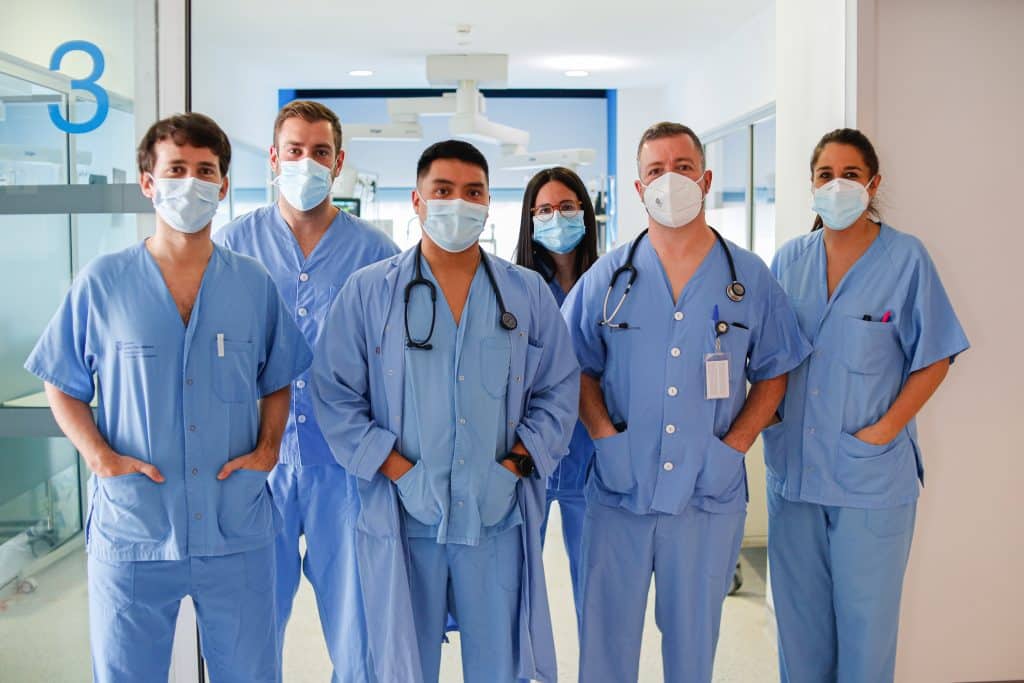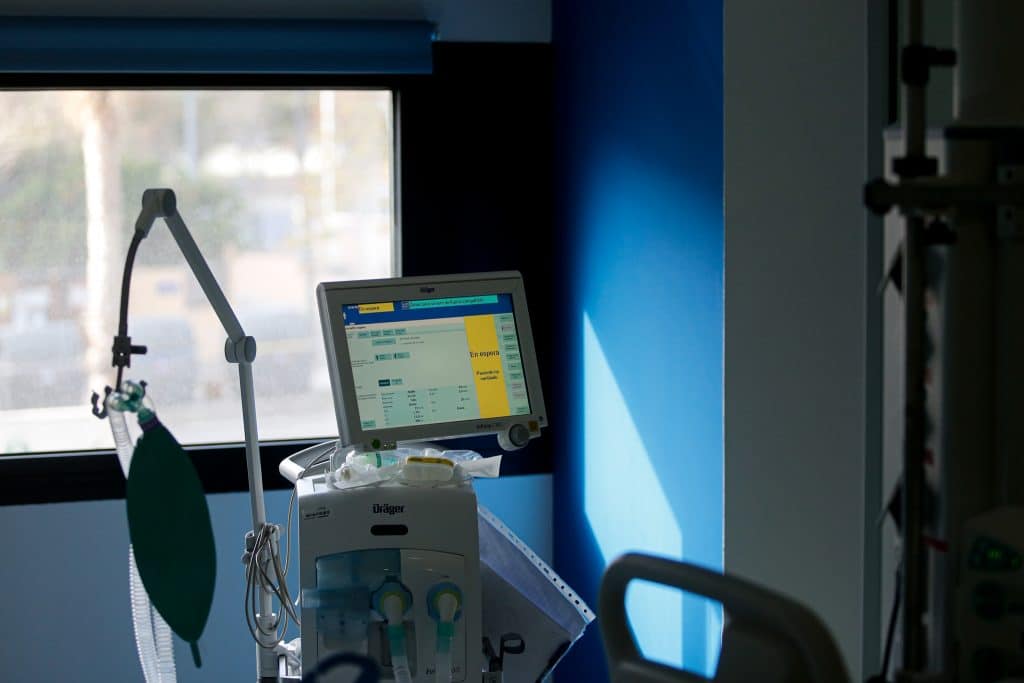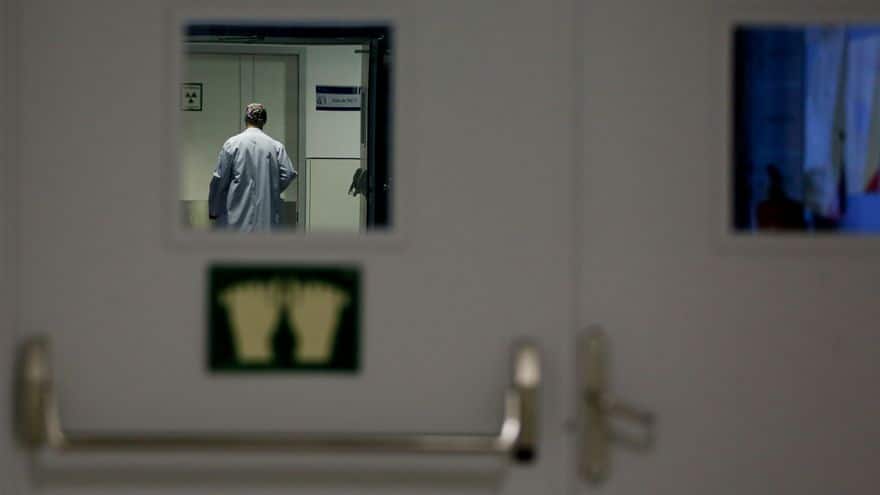Coronavirus. The daily data of coronavirus positives in Can Misses ICU is viewed with skepticism. They have seen the curve rise to previously unanticipated levels in the last two years and are confident that the more than 10,000 active infected do not translate into a high level of care pressure in the unit, where they ensure that the patient covid that comes into their hands is just as serious regardless of the variant with which they are infected.
“There is no difference once you’re here. Although omicron is said to be milder, when a patient arrives at the ICU, the behavior is the same” says Gaspar Tuero, intensivist physician at the Hospital Can Misses’ Intensive Care Unit, where five covid patients were admitted on Friday, the last day the Area of Health pitiusa provided data on the pandemic. In other words, regardless of how much less aggressive Omicron is, when an infected person’s condition deteriorates to the point of admission to a critical care unit, his or her condition is quite dangerous.
According to a review of data from coronavirus patients who have been through the Can Misses unit in the last six months, “more and more are not vaccinated.“ Thus, at the time, 72% of them had not gotten any dose of the vaccine, a figure that rises to 80% when those who are “poorly vaccinated” are included. That is, those who do not follow the entire program. The remainder, according to the unit, are individuals who have been vaccinated but are elderly, immunocompromised, have tumors, or have had a transplant.
The UCI coronavirus patients’ severity and condition remain as critical as in past rounds; what has changed is how they are managed.
The UCI coronavirus patients’ at severity and condition remain as critical as in prior waves; what has changed is how they are managed: “They are not intubated as often as at the beginning.” Tuero recalls that this was typical in the initial wave, nearly two years ago, but that now, before intubating them, efforts are made to boost the flow of oxygen without the necessity for this procedure, using masks or goggles that insufflate it. Some of these procedures were discouraged at the time “because it was thought that they produced a large amount of aerosols.” “The procedures are also clearer now,” says one ICU physician, who adds that there are factors (age, obesity, diabetes, and so on) that can aggravate the virus’ evolution in people affected. “There is a personal component,” he explains.
The final stages before linking ICU patients to an artificial lung include intubating them and laying them face down.
According to the doctor, people have an intrinsic immunity that is activated during the first week following infection and acts “against any sort of illness,” attempting to prevent the virus from multiplying. Vaccines, on the other hand, are “special defenses,” or unique immunity that responds to the virus, which, the more copies it manages to generate, the more harm it causes the body. As Tuero explains, it’s impossible not to think of the policemen from the animated sitcom ‘Once Upon a Time in Life.’ “The white policeman on foot would be the natural immunity, and the spaceships, the extraordinary bodies,” the doctor laughs. When the body fails to win this battle, individuals afflicted, rather than being treated, deteriorate and must be admitted. If they are critically unwell, they will be admitted to the ward, and if their condition is more complicated, they will be admitted to the critical care unit.

The ICU’s 5 stages for coronavirus patients
“There is a staircase,” says the intensivist, alluding to the various states, depending on severity, that patients may pass through upon entering the ICU. Something along the lines of Buzzati’s ‘Seven Floors.’ “The more afflicted the lung is, the more aggressive we have to be to preserve oxygenation,” explains the doctor. The first floor would still be on Internal Medicine’s F or G, where the patient receives oxygen through a mask. When the patient’s evolution is insufficient and he or she need 100% oxygen, the doctors transfer the patient to the ICU. Following that, patients are provided with a mask or nasal goggles, both with high oxygen flow and pressure.
According to data from the Balearic Ministry of Health, only 1.6 vaccinated people out of every hundred thousand inhabitants attend the ICU in the event of covid infection. This indicator climbs to 62.3 among the unvaccinated.
“If these steps are insufficient and the patient’s oxygenation does not improve, we will be compelled to intubate and link him to a respirator,” the doctor explains, adding that the next step would be to place the patient face down, prone, a position that enhances oxygenation. Can Misses has lost track of the amount of times they have performed this covid patient mobilization. To accomplish so, multiple personnel must work together to turn the patients while they are still connected to respirators and perfusion pumps, among other things, which must not be discharged during the move, which necessitates a major effort on the part of specialists.

The final stage for these critically ill patients who do not improve is to place them on extracorporeal membrane oxygenation, or ECMO, often known as artificial lung. A procedure that is not ideal for all patients because, in order to connect the patient to the machine that functions as a lung (and, in certain situations, as a heart), doctors must be certain that the patient will be able to withstand it. “What is done is suck blood through a tube and pass it across a membrane that oxygenates it,” explains the intensivist, who adds that it is primarily considered for young patients. “And yet…” he adds, “It is a difficult method with a high mortality rate and can create thrombi,” Tuero explains, noting that the latter is precisely one of the problems that coronavirus can bring.
For the full article, please visit Diario de Ibiza website here.

